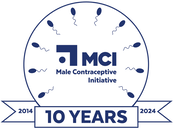|
(Image Source: Public Domain) We acknowledge that a person's sex and gender are two different things, as discussed here. Sex is defined as, "either of the two major forms of individuals that occur in many species and that are distinguished respectively as female or male, especially on the basis of their reproductive organs and structures." In this article, we will be referring to "male" and "female" in reference to the scientific classification of a reproductive system and not a person's gender identity. What is the difference between Sperm and Semen?Sperm Sperm is the male reproductive cell or gamete, a microscopic cell with a head and tail that looks like a tadpole. This determined little cell is hyper-focused on one job and one job only. It wants to find an egg and make a baby. This single-cell organism can accomplish its mission through sex or in vitro fertilization. In one little sperm, there is a total of 23 chromosomes—half of what you need to make a human. The egg contains the other 23. Together, they complete each other. Though sperm has a long whip-like tail, it is not strong enough to travel on this long journey to the egg, they need a ride. Semen Luckily, sperm doesn't have to travel alone. Thanks to semen, sperm is carried away. Semen, or seminal fluid, is an organic fluid created to contain and transport sperm, or spermatozoa, from the male reproductive tract into the female reproductive tract. Semen contains all the chemicals that a sperm cell could need. The seminal vesicles in the pelvis and the prostate provide these chemicals. Like chips for a long road trip, semen needs to have fructose to give sperm the energy it needs. It also needs prostaglandins. Prostaglandins have two main jobs. One is to help sperm swim to the egg or ovum through the female reproductive tract. The second is to induct sperm mobility. When there is an imbalance in prostaglandins, this can result in male infertility or affect sperm motility. Egg and Sperm Upon ejaculation, the mixture of fluids rocket into the female reproductive tract. The average ejaculation is around a single teaspoon of fluid. This small amount can carry an incredible sperm count: anywhere from 15 - 200 MILLION sperm. When the egg and sperm meet it creates a zygote. This fertilized egg can then implant in the uterus resulting in a pregnancy. Only one egg is released per month in a menstrual cycle. With a male reproductive system, one person can theoretically impregnate nine people, with a female reproductive system, per day! Therefore, in theory, in the time it takes the female reproductive system to turn out one baby, the male reproductive system can cause 2,430 pregnancies. For centuries the responsibility of family planning and contraceptive use has leaned heavily on those with a female reproductive system. Half of all pregnancies are unplanned. Therefore, the need for contraceptive support to be available to all genders is vital in our path towards gender equality. Sperm-targeting Contraception MCI is on a mission to create a world where everyone has reproductive freedom. Through efforts in advocacy, education, and funding research efforts to lead to a sperm targeting birth control, we want to make family planning an equal playing field. We believe that everyone deserves reproductive autonomy. This guides us as we evaluate opportunities for funding and advocacy support to develop new methods of male contraception or a non-hormonal, reversible male birth control (NHRMC). We would essentially be funding the creation of the male birth control pill. We encourage you to join us on our journey and share your thoughts with us. To help us deliver the best content and advocacy possible, we'd like to know what "Reproductive Autonomy for All" means to you. Please share your thoughts via this survey today. Nuts & Bolts: Semen vs. Sperm To learn more about, please visit our series of posts about male reproduction and contraception: Key terms: Ovum - a mature female reproductive cell, especially of a human or other animal, which can divide to give rise to an embryo usually only after fertilization by a male cell. Seminal fluid - another term for sperm. Zygote - a diploid cell resulting from the fusion of two haploid gametes; a fertilized ovum. For additional terminology related to male contraception and the male reproductive system, please visit our glossary: Sources/References: Dewsbury, Donald A. (1972). "Patterns of Copulatory Behavior in Male Mammals". The Quarterly Review of Biology. 47: 1–33. doi:10.1086/407097. PMID 4553708. S2CID 6745690. Mann, T (1954). "The Biochemistry of Semen". London: Methuen & Co; New York: John Wiley & Sons. Retrieved November 9, 2013. Guyton, Arthur C. (1991). Textbook of Medical Physiology (8th ed.). Philadelphia: W.B. Saunders. pp. 890–891. ISBN 0-7216-3994-1. Owen, D. H.; Katz, DF (2005). "A Review of the Physical and Chemical Properties of Human Semen and the Formulation of a Semen Simulant". Journal of Andrology. 26 (4): 459–69. doi:10.2164/jandrol.04104. PMID 15955884. Baker, R (1993). "Human sperm competition: Ejaculate adjustment by males and the function of masturbation". Animal Behaviour. 46 (5): 861. Poiani, Aldo (July 2006). "Complexity of Seminal Fluid: A Review". Behavioral Ecology and Sociobiology. 60 (3): 295–296. doi:10.1007/s00265-006-0178-0. JSTOR 25063816. S2CID 12955573. NG Hatfield (31 May 2008). "Proper Use of Ejaculatory Slang: Male Finishing School, Part I". Points in Case. Retrieved 1 December 2016. Robert T. Francoeur, Raymond J. Noonan (2004) The Continuum Complete International Encyclopedia of Sexuality p.819 "Animal reproductive system - Male systems". Encyclopedia Britannica. Retrieved 2020-02-20. Fawcett, D. W. (1981) Sperm Flagellum. In: The Cell. D. W. Fawcett. Philadelphia, W. B. Saunders Company. 14: pp. 604-640. Hewitson, Laura & Schatten, Gerald P. (2003). "The biology of fertilization in humans". In Patrizio, Pasquale; et al. (eds.). A color atlas for human assisted reproduction: laboratory and clinical insights. Lippincott Williams & Wilkins. p. 3. ISBN 978-0-7817-3769-2. Retrieved 2013-11-09. For additional publications related to male contraception and the male reproductive system, please visit our publications page:
Comments are closed.
|
Categories
All
Archives
June 2024
|
|
|
Donate to Male Contraceptive InitiativeYour generous donation makes a difference!
|
© Male Contraceptive Initiative. All rights reserved.


 RSS Feed
RSS Feed
